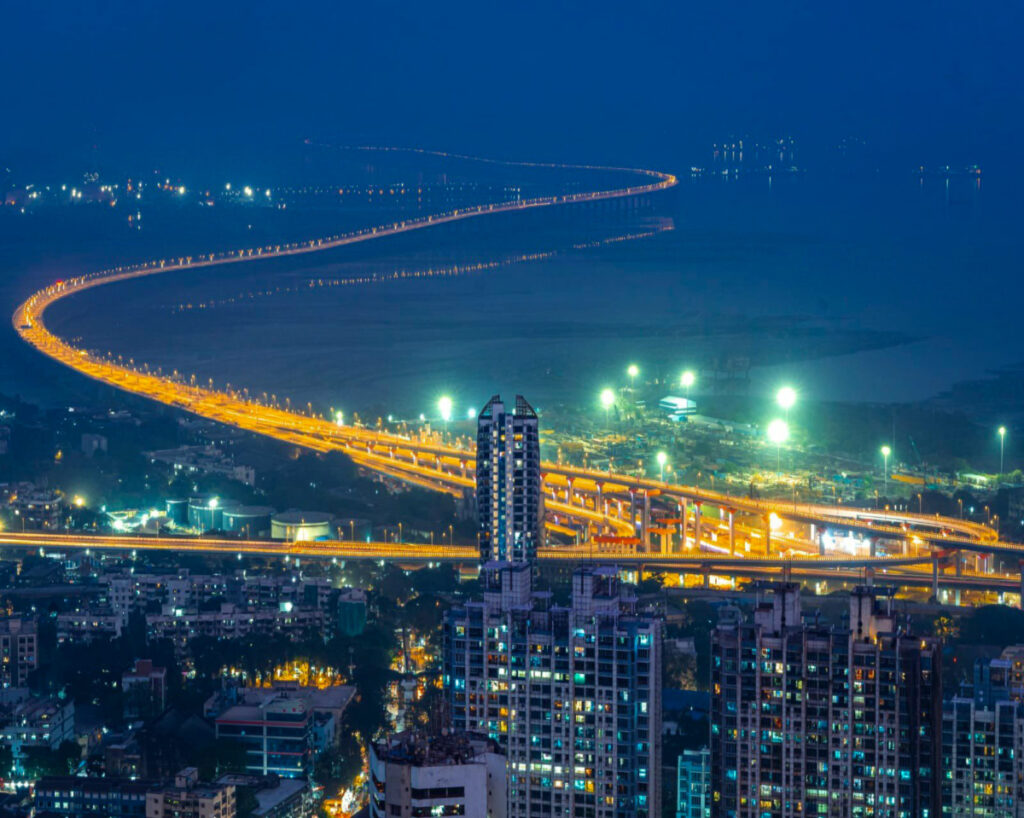In an exhibition of engineering ingenuity, India has unveiled Atal Setu, the Mumbai Trans Harbour Link (MTHL), standing tall as the country’s longest sea bridge. This architectural marvel, crafted over seven years at a cost exceeding Rs 18,000 crore, is set to redefine the landscape of Mumbai and stands as a testament to India’s prowess in civil engineering.
The sheer scale of Atal Setu is staggering, utilizing 1 Lakh 77,903 Metric tons of steel, a quantity 17 times that of the iconic Eiffel Tower in Paris. Comprising 254 seismic isolation bearings, the bridge incorporates advanced engineering techniques to ensure stability during seismic events, making it a technological tour de force.
Initiated around three decades ago with the vision to streamline traffic between Mumbai and Navi Mumbai, Atal Setu has not just fulfilled its purpose but exceeded expectations. With a length of about 22 kilometers, including a sea stretch of 16.5 kilometers, the bridge symbolizes strategic planning, meticulous execution, and an unwavering commitment to progress.
The inauguration of Atal Setu by the Prime Minister of India marks a significant milestone in Mumbai’s history. Commuters traveling between Mumbai and Navi Mumbai can now rejoice as the travel time has been slashed from a cumbersome two hours to a mere 20 minutes. This reduction in travel time is expected to ease traffic congestion, boost economic development, and bring distant places like Goa, Pune, and Nagpur closer to Mumbai.
Incorporating 254 seismic isolation bearings, Atal Setu is designed to absorb tremors during earthquakes, safeguarding the structure and ensuring the safety of commuters. The use of high-performance concrete, resistant to the corrosive effects of seawater and the intense Mumbai sun, adds to the bridge’s durability and longevity.
Setting a new benchmark in infrastructure innovation, Atal Setu introduces India’s first sea bridge with an open road tolling system. Commuters can seamlessly traverse the bridge at speeds of up to 100 km/h without the need to slow down for toll payments, showcasing efficiency in design and functionality.
Addressing environmental concerns, the bridge incorporates special crash barriers strategically placed at a height of 1.55 meters to preserve uninterrupted sea views. Additionally, 1212 specially designed light poles illuminate only the carriage wing, ensuring minimal disturbance to marine life while providing a visually stunning experience for commuters.
Except its functional benefits, Atal Setu is poised to become a new tourist attraction. The bridge offers breathtaking panoramic views of the Arabian Sea and the Mumbai skyline. With special attention to design elements, including crash barriers that do not obstruct sea views, the bridge provides a unique and scenic experience for both locals and visitors.
Beyond its structural marvels, Atal Setu is positioned as an economic catalyst for the Mumbai metropolitan region. With the potential to reshape transportation dynamics, reduce travel time, and stimulate economic activities, the bridge is more than just a physical link; it is a symbol of progress and prosperity.
As Atal Setu opens its lanes to the public, it not only connects two major urban centers but also stands as a testament to the prowess of Indian engineering, showcasing the nation’s ability to conquer challenges and push the boundaries of what is possible in the realm of civil infrastructure.

